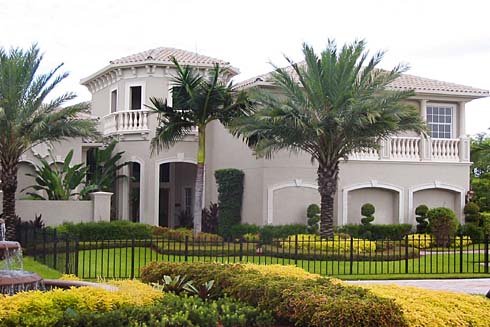INNER CITY
Exploring Inner City Real Estate: Challenges and Opportunities
In the realm of real estate, the term 'inner city' often evokes images of the older and more urbanized areas that surround the central business district of a large city. These areas are generally characterized by densely populated neighborhoods, often with a high proportion of low-income residents and minority racial and ethnic groups. The concept of inner city real estate presents a unique set of challenges and opportunities that are essential to understand for anyone involved in urban property markets.
Understanding Inner City Real Estate
1. Historical Significance
The inner city areas often have a rich historical significance, being the original core of the city's development. Over time, these areas may have experienced economic shifts and demographic changes, leading to their current characterizations.
2. Demographics
Inner city neighborhoods typically have a diverse demographic composition, often with a high concentration of minority racial and ethnic groups. Additionally, these areas may have a higher proportion of low-income residents compared to other parts of the city.
3. Economic Challenges
Inner city areas may face economic challenges such as blight, higher crime rates, and limited access to quality amenities and services, which can impact the overall desirability of the area for real estate investment and development.
Challenges in Inner City Real Estate
Challenges in Inner City Real Estate
1. Blight and Deterioration
Many inner city neighborhoods suffer from physical blight, including deteriorating infrastructure, vacant properties, and limited investment in maintenance and upkeep.
2. Limited Economic Investment
Due to economic challenges, inner city areas may struggle to attract private investment, leading to a lack of commercial and retail development and diminished economic opportunities for residents.
3. Social Inequality
The concentration of low-income residents and minority groups in inner city areas can exacerbate social inequalities, impacting access to quality education, healthcare, and employment opportunities.
Opportunities in Inner City Real Estate
1. Revitalization and Redevelopment
Inner city areas present opportunities for revitalization and redevelopment, offering the potential for transforming blighted properties and neighborhoods into vibrant, desirable communities.
2. Affordable Housing
Given the lower property values in many inner city areas, there may be opportunities to provide affordable housing options for residents, contributing to efforts to address housing affordability challenges.
3. Cultural and Community Assets
Inner city neighborhoods often possess unique cultural and community assets, such as historic landmarks, cultural institutions, and diverse culinary scenes, which can be leveraged to attract investment and tourism.
Conclusion
In conclusion, inner city real estate presents a complex landscape characterized by historical significance, demographic diversity, economic challenges, and opportunities for revitalization. While these areas may face significant obstacles such as blight and social inequality, they also offer potential for transformative redevelopment, affordable housing initiatives, and the preservation of cultural and community assets. Understanding the nuances of inner city real estate is essential for real estate professionals, policymakers, and community stakeholders seeking to address the challenges and harness the opportunities presented by these urban neighborhoods. By engaging with the complexities of inner city real estate, it becomes possible to work towards creating inclusive, vibrant, and sustainable urban communities for the future.
MORE REAL ESTATE TERMS
A, B, C, D, E, F, G, H, I, J, K, L, M, N, O, P, Q, R, S, T, U, V, W, X, Y, Z
Featured New Home

Featured Mortgage Brokers
- MOVEMENT MORTGAGE LLC, GASTONIA, NC
1000 S NEW HOPE RD
GASTONIA, NC 28054 - MCCUE MORTGAGE COMPANY, NEW BRITAIN, CT
1 LIBERTY SQ
NEW BRITAIN, CT 6051 - DITECH MORTGAGE CORP, FORT WASHINGTON, PA
1100 VIRGINIA DR STE 100
FORT WASHINGTON, PA 19034 - PINNACLE CAPITAL MORTGAGE CORPORATION, BELLEVUE, WA
2800 NORTHUP WAY STE 220
BELLEVUE, WA 98004 - MOVEMENT MORTGAGE LLC, FREDERICKSBURG, VA
4920 SOUTHPOINT DR
FREDERICKSBURG, VA 22407